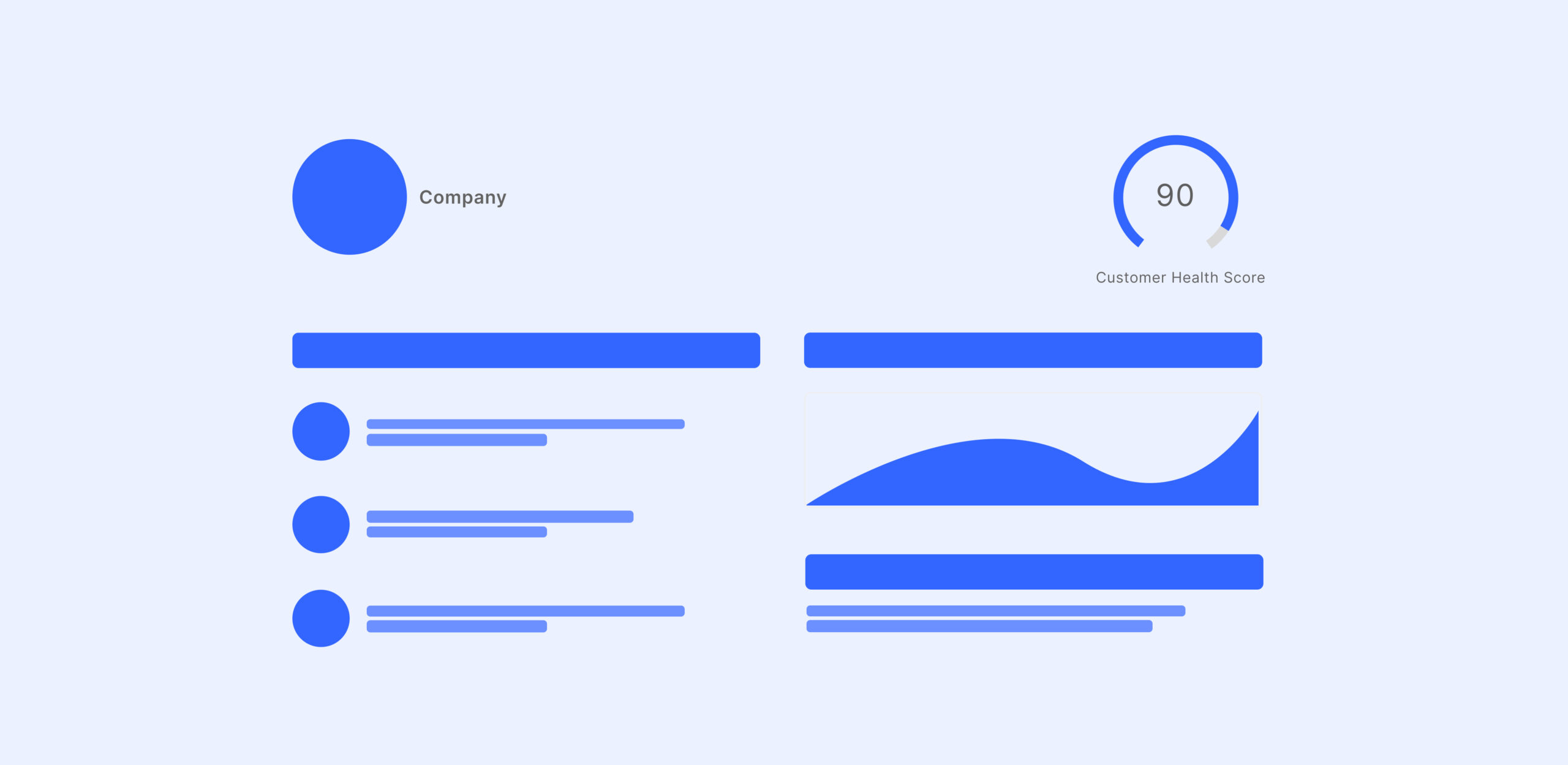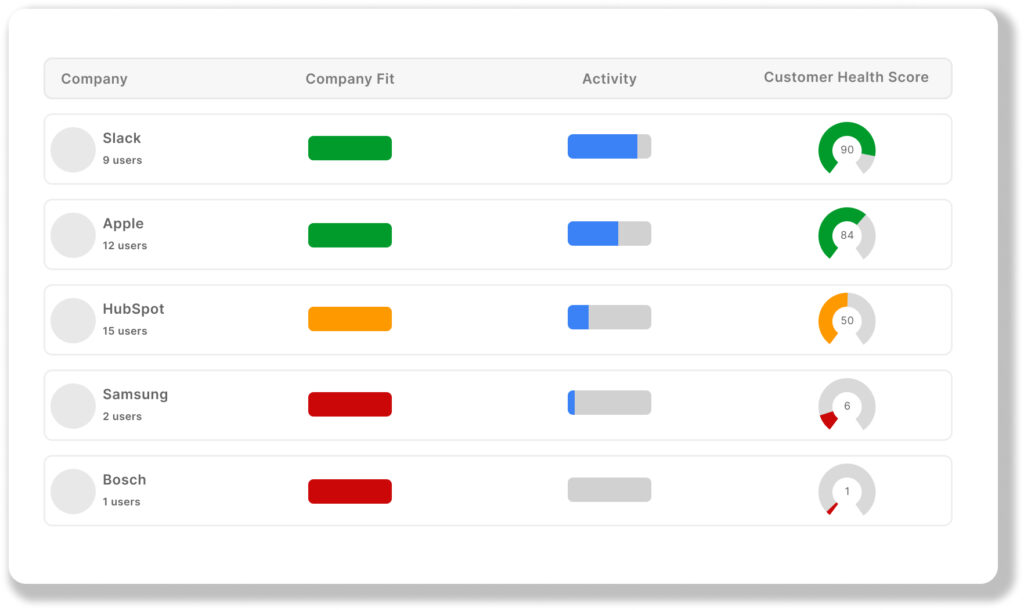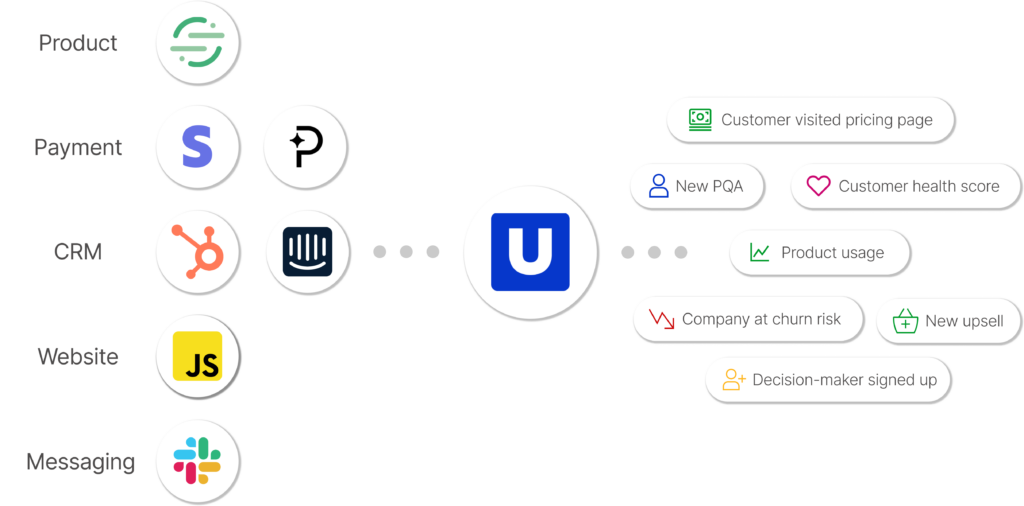Customer 360-degree view is your way to understand and act on each different customer account. Why to do so? Because in B2B SaaS, being customer-centric is the most crucial element of success.
“A 5% increase in customer retention produces more than a 25% increase in profit.”
Fred Reichheld of Bain & Company
As companies try to understand and retain their customers, a powerful concept has taken center stage: Customer 360.
This approach goes beyond traditional customer relationship management (CRM) systems by providing a comprehensive and panoramic view of each customer.
Companies can create a complete profile that reveals customer needs, behaviors, pain points, and prioritizations by collecting data from various touchpoints and interactions across the customer journey.
In this article, I will:
- Explain the essence of Customer 360,
- Explore its significance, benefits, and implementation strategies,
- All while highlighting how Customer 360 has improved the way SaaS companies retain customers, build relationships, and drive growth.
Let’s start with:
What is Customer 360?
Customer 360 is an all-customer-data-in-one picture. It is a view where all the details about a customer are collected and displayed in one place.
In other words, it gives you a complete, all-around view of your customers by putting together data from different touchpoints and presenting it in a readable way.
This lets you keep track of customers’ interactions, preferences, and history in real time, so you can engage with them in a way that is both personal and timely.
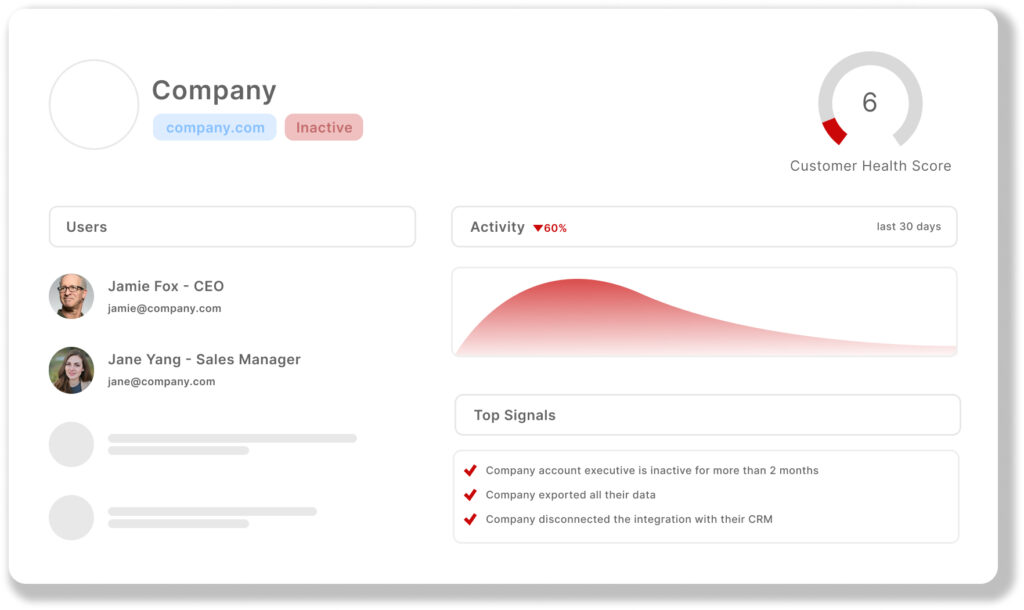
This isn’t just about collecting data. Customer 360 makes sure the data is ready to be used. All parts of a business look at this same information. This means everyone knows the same things about the customer.
For example, if you run a B2B SaaS, your customers are not individuals; but “companies”. In that case, you can see all users, their interactions, and the account-level activity of the company.
Or, as given in the image above, a customer may be at the edge of churn. With Customer 360 view, you can see all relevant data and churn signals in one place, and your customer success team can work on preventing it.
You can collect data from every stage of the customer lifecycle, therefore, serving customers in a better and more timely way, giving you the power to confidently drive revenue.
Why Customer 360 is Important?
A complete understanding of customers, hence loyal relationships, can translate into significant cost savings for a business.
Think about the cost of dealing with a loyal customer compared to the expense of finding a new one.
Many businesses find that the longer a customer stays with them, the more profit they bring in. With a clear view like Customer 360, companies can:
- Detect customers and accounts that are more likely to expand, or at risk of churn.
- Draw product usage patterns of high-revenue generating actions to improve their strategies.
- Enhance customer service, having established trust with a company.
- Lower operational costs, as they become familiar with a loyal customer’s preferences and needs.
- Achieve better data quality in analytics and machine learning, leading to smarter business decisions.
There is more I can tell, but let’s specifically look at the benefits of Customer 360 for B2B SaaS.
Benefits of Customer 360-degree View for SaaS
Software as a Service (SaaS) businesses frequently use dynamic, subscription-based business models and can benefit significantly from a Customer 360-degree view. Using a Customer 360 approach can help SaaS companies in several ways:
1. Improved understanding of the customers
For SaaS businesses, every customer interaction is an opportunity to gather insights.
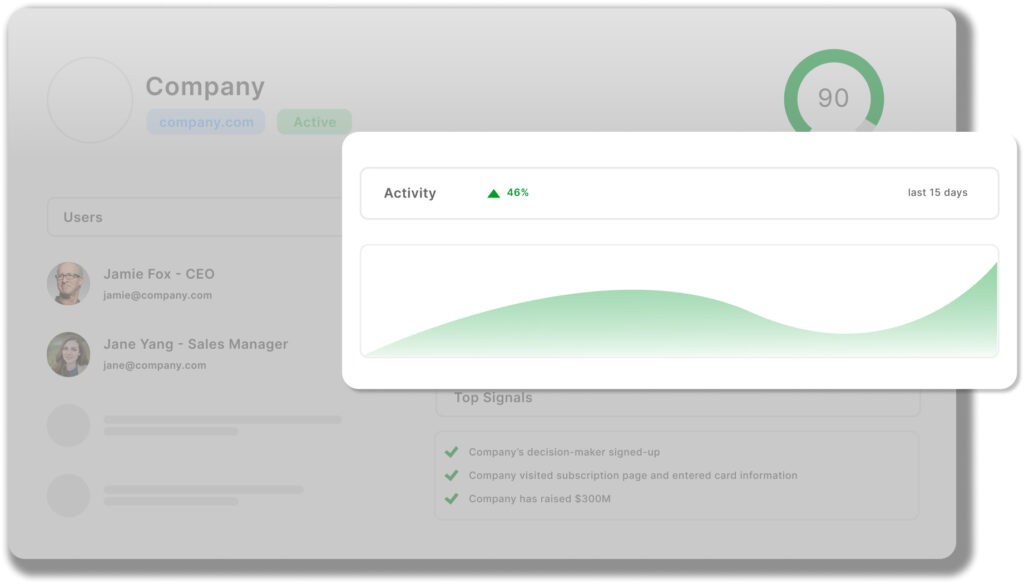
With a 360-degree view, companies can understand customer preferences, usage patterns, and interactions, painting a vivid picture of their customers..
Armed with this understanding, SaaS businesses can craft highly tailored marketing campaigns, innovate features aligned with user needs, and devise customer success strategies that resonate.
This not only enhances user experience but also fosters loyalty and drives revenue growth.
2. Personalized customer experiences
With a 360-degree view, SaaS companies can really get to know their users. This means they can offer experiences that feel special and just for them.
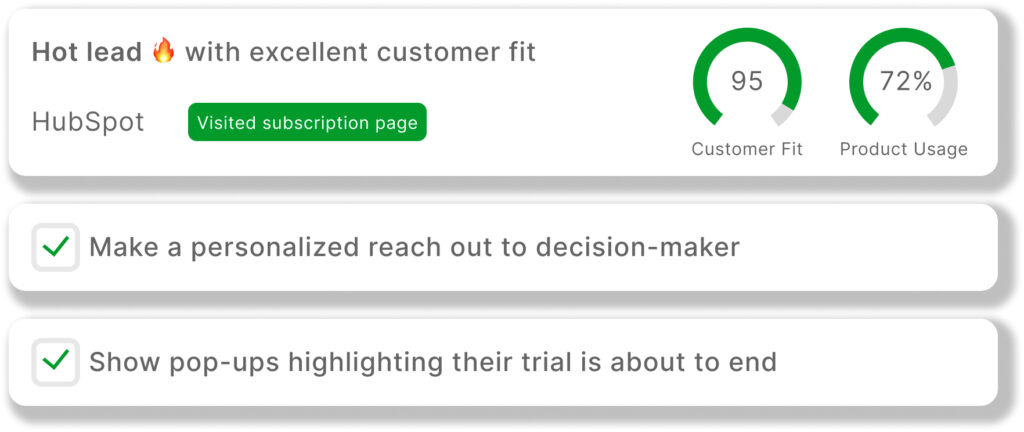
By looking at things like how users interact with the software or their usage history, businesses can give helpful suggestions, lessons, and support that fit just right for each user. This makes customers feel understood and valued.
3. Decreased churn
One of the big challenges for SaaS companies is keeping customers around. When customers leave or stop using the service, it’s called ‘churn’, and it’s something all SaaS businesses want to avoid.
With a 360-degree view, these companies can look closely at how customers use their service, how they interact with it, and what they’re saying in feedback.
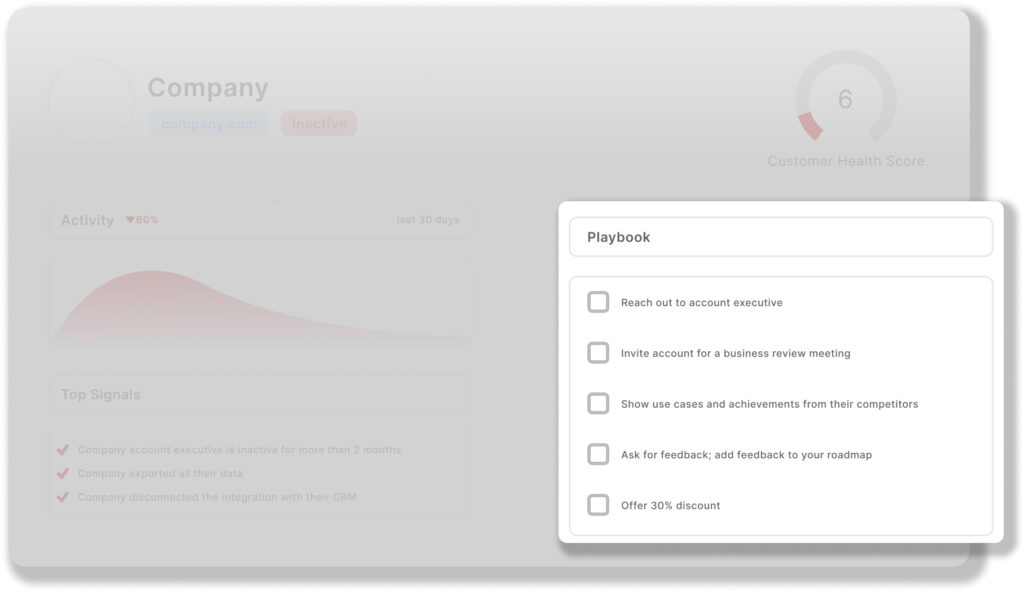
This way, if there are signs that a customer might be thinking of leaving, the company can see it early on.
And because all this info is in one place and easy to look at, companies can act quickly. They can reach out, find out what’s wrong, and try to make things right, keeping more customers happy and on board.
4. Improved product development
SaaS companies always want to make their software better. With a 360-degree view, they can really see what their customers want.
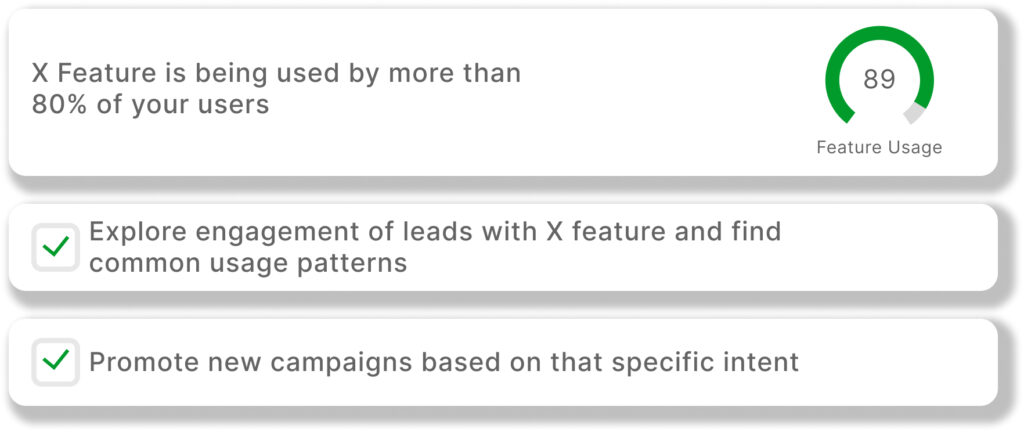
By looking at feature usage and engagement, companies can choose which features to work on first. This means they can make changes that customers are excited about.
When customers see that a product is changing in ways they like, they’re more likely to keep using it and even tell others about it. So, by using this full view, companies can make sure they’re meeting what their customers expect and hope for.
5. Targeted marketing efforts
When SaaS companies really get to know their customers’ likes and habits, they can make better marketing plans.
Instead of broad campaigns that might miss the mark, they can create specific ones that speak directly to certain groups of customers. This means more people paying attention and getting interested, leading to better results.
6. Competitive advantage
SaaS companies that really show they know and care about their customers stand out. By using a 360-degree view, they show they’re committed to understanding and helping their users.
This not only makes them different from other companies but also gives them a better reputation. It’s like a badge of trust that draws more people in.
7. Long-term relationships
For SaaS companies, it’s all about keeping good relationships with customers. By always giving customers what they need and valuing their feedback, companies can form lasting bonds.
This means fewer customers leaving and more of them sticking around, loving the service, and even telling others about it. It’s a win-win for everyone!
Creating Actionable Customer 360 View
The benefits of a 360-degree view, and having control over all of it aren’t limited to the listed items above. It goes beyond that as long as you do it the right way.
To “do it the right way,” you must collect and analyze the most crucial data for Customer 360.
Three shining stars:
Customer Health Score
Think of the Customer Health Score like a health checkup but for your customer relationships. It measures how strong and healthy the relationship is between a company and its customers. A good score? The relationship is going strong. A not-so-good score? There might be some issues to address.
Customer Health Score is a metric that businesses use to gauge the overall health and satisfaction of their customer relationships. It gathers meaningful customer data and predicts how they will behave in a given period.
A high score indicates a strong, positive relationship, while a low score might suggest areas for improvement or potential issues. It’s a tool that helps companies proactively address customer needs and enhance their services.
In an ideal customer health scoring, the score is graded out of 100 and categorized into three color-coded levels representing their health status: green (healthy), orange (moderate), and red (at risk).
The customer health score gives you accessible and accurate data about how your customer base has been shaped and what it could look like in the future. Any unexpected change in the overall health score – or that of a specific segment – can give you ideas of whether your recent steps paid off or if you should change strategies immediately.
To measure the CHS accurately, you need multiple data points such as ICP, segments, NPS, product usage, engagement, etc. Instead of going through all of those or missing out on one, the CHS gives you an actionable score of your users’ actions.
While traditional CRMs could give you all the data to accurately measure the Customer Health Score, a Customer 360 tool will provide you the CHS directly, leaving you less manual labor and more time for the more critical tasks.
Customer Segmentation
Customer Segmentation is dividing your customer base into groups that share similar attributes to predict their needs and struggles accurately.

So how do you segment your customers accurately?
Define Segmentation Criteria
- Demographics: Age, gender, location, income level, company size (for B2B).
- Behavioral: Usage frequency, feature adoption, purchase history, and interaction with marketing materials.
- Psychographic: Lifestyle, interests, values, attitudes, motivations.
- Customer Lifecycle Stage: New customers, active users, at-risk customers, loyal advocates.
Data Analysis and Clustering
- Use data analysis techniques to identify patterns and clusters within your customer data.
- Clustering algorithms can automatically group similar customers based on various attributes.
Prioritize High-Value Segments
- Focus on segments with a higher lifetime value, are more likely to convert, or are at risk of churning.
- Consider the potential impact on your business goals when selecting segments to target.
Personalized Content and Communications
- Craft content, offers, and messages tailored to each segment’s preferences and needs.
- Use personalized language and references that resonate with the segment’s characteristics.
Behavior-Based Triggers
- Set up automated triggers based on specific customer behaviors, such as not using a feature or decreasing engagement.
- These triggers can prompt targeted messages or interventions to prevent churn.
Segment-Specific Marketing Campaigns
- Design marketing campaigns that address each segment’s unique pain points or desires.
- Highlight how your product or service specifically meets their needs.
Customized User Experiences
- Modify the user interface or product experience based on segment preferences.
- Offer features or functionalities that align with the segment’s goals.
Retention Strategies
- For at-risk segments, develop retention strategies that address their concerns and offer solutions.
- This could involve personalized support, training, or special offers.
Cross-Selling and Upselling
- Identify segments most likely to be interested in additional products or upgrades.
- Create targeted cross-selling or upselling campaigns to increase revenue.
Feedback Collection
- Gather feedback from different segments to understand their unique needs and pain points.
- Use this feedback to iterate and improve your product or service offerings.
As you can see, there is too much to consider.
And in today’s world, handling all those segmentations manually is near impossible.
You can either rely on multiple data tools to handle your segmentation and data correctly or automate these segments based on the rules you set within your Customer 360 tool.
Integrations
The size of the SaaS tool stack integrations makes the Customer 360 view strong. Instead of forcing companies to migrate all kinds of data from tens of platforms, most Customer 360 tools make it easy for users by providing integrations with the tools they already use.
So what kind of integrations should a Customer 360 have?
- CRM integrations for easy access to a customer base, segmented accounts, and support tickets
- Payment and invoice tools for a clear perspective of all transactional activity and complications,
- Communication tools to let teams know about real-time engagement insights,
- And most importantly, customer and product data integration sends real-time event data to uncover customer details and product usage.
By syncing all the crucial data into the Customer 360 platform, you can have a single automated tool and customized dashboard to reach the exact information exactly when needed.
How Does Customer 360 Help B2B SaaS Teams?
Most SaaS companies start with only an idea and a few people and rapidly scale up. This brings advantages and disadvantages, but usually, the setting up of roles and departments doesn’t go as planned.
A standard CRM only works with and for sales, marketing, and customer success teams. It relies on previously collected (old) data and leaves out some aspects of the customer.
But a Customer 360 tool that helps the whole company with strong integrations and unique points could be what allows that company to thrive and scale faster.
Customer Success Team
Customer 360 gives the customer success team a holistic overview of the following:
- Usage patterns,
- Support history,
- Feedback data,
- Churn signals,
- And upsell alerts.
Having access to all the resources they need to take action and create a roadmap on one platform gives them a headstart, eliminating the need for data collection hours.
Using all the data in a single tool and even on a single dashboard (that could also give you insights, depending on the tool you use) help the success team easily cross-reference the data from the meetings, surveys, and usage reports.
This will not only speed up their process but also help the team make more solid decisions on what steps to take to ensure all customers are directed correctly.
Sales Team
The sales team needs customer-specific details to know what the users want and an overview of standard patterns to translate them into a sales pitch quickly.
Having access to all data at once, they can easily create a plan based on previous users’ feedback and usage patterns to guide new users directly to the “Aha!” moment.
A Customer 360 could also help the sales team identify and differentiate the most valuable leads from the others.
The segmentation and user tracking abilities of a Customer 360 tool will give the sales team the independence over leaning more toward those highly qualified leads, resulting in higher revenue and lower cost-per-conversion.
Growth and Revenue Team
The data and segments that the tool will provide the growth and marketing teams to develop more personalized marketing strategies.
By correctly targeting their most valuable markets and industries, or high-revenue generating actions, they can create tailor-made accurate campaigns and get the conversion rates flying up high quickly.
Since a Customer 360 eliminates the need to go through multiple tools and wait for responses from other teams, it gives all groups the upper hand of being autonomous.
Conclusion
Customer 360 empowers the whole company, from customer success to revenue, by providing different insights for each from the same dashboard.
Therefore, B2B SaaS companies can gain much from having a Customer 360 view, including customer health scoring, segmentation, and integrations, instead of switching through different products, data, and accounts.
Frequently Asked Questions about Customer 360
What is Customer 360?
Customer 360 is an approach that goes beyond traditional customer relationship management (CRM) systems by providing a comprehensive and panoramic view of each customer. It provides a singular space where all teams can gather and analyze all kinds of data and information, and track progress.
Why Customer 360 is important?
SaaS companies, as much as in any other sector, look for ways to engage customers and drive revenue growth by reducing costs and efforts. Customer 360 views support B2B SaaS companies by providing all relevant information to engage with, retain, and expand customers.

